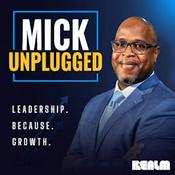955 Episoden

955 - Went, Gone, or Been - What’s the Real Difference?
22.12.2025 | 7 Min.
Have you ever gone somewhere… and then realized you should’ve been somewhere else? Or maybe you went somewhere, and now you’re trying to explain that… but the grammar just won’t come out right. Don’t worry - this happens to a lot of English learners. So today, we’re going to clear it all up.Went, Been, Gone. Yeah - I know. These words all seem similar, and sometimes even native speakers mix them up. But there is a pattern. There is a logic behind when we use went, gone, and been. So today, I’m gonna break it down for you in a clear, simple way - with a bunch of examples to make it all stick.Watch video versions of the Happy English Podcast on YouTube: https://www.youtube.com/@HappyEnglishNY/podcastsBuild Vocabulary With My Free Vocabulary Workshop: https://learn.myhappyenglish.com/vocabulary-workshop-signup

954 - The Tiny W - Speak Naturally in a Minute | Happy English
21.12.2025 | 2 Min.
Hey there! It’s Michael here - and welcome back to Speak Naturally in a Minute from Happy English. I’m here every Sunday with a quick one-point lesson to help you improve your pronunciation, rhythm, and intonation. And if you want to watch this lesson, just look for Happy English Podcast on YouTube.Now, in everyday spoken American English, we often connect vowel sounds with a very small, quick W sound. I call this the tiny W. The tiny W happens when when one word ends with an “oo” sound and the next word begins with a vowel sound. Like, do it. We don’t stop the sound, and in one breath we say, doo-wit. It’s not do it, it’s doo-wit. I’m gonna doo-wit tomorrow. Did you hear the tiny w? I’m gonna doo-wit tomorrow. Here are some other examples: You are sounds like yoo-wahr. Yoo-wahr a nice person. Who else sounds like hoo-welse. Hoo-welse is coming to the party?To ask sounds like too-wask. You need too-wask the boss.Be sure to practice these phrases yourself this week and they will become part of your English. And remember to follow and subscribe so you won’t miss the next Happy English Podcast and next Sunday’s Speak Naturally in a Minute. Hey, thanks for listening! Until next time, keep learning and keep it cool.Watch video versions of the Happy English Podcast on YouTube: https://www.youtube.com/@HappyEnglishNY/podcastsBuild Vocabulary With My Free Vocabulary Workshop: https://learn.myhappyenglish.com/vocabulary-workshop-signup

953 - The Next Thing I Knew - English Tips in a Minute | Happy English
20.12.2025 | 1 Min.
Hey there! It’s Michael here - and welcome back to English Tips in a Minute from Happy English. I’m here every Saturday with a short, simple tip to help you speak English more naturally and confidently. And if you want to watch this lesson, just look for Happy English Podcast on YouTube.Today, let’s look at a really useful expression for telling stories - “the next thing I knew.” We use the next thing I knew when something happens quickly or unexpectedly, especially in a story. It’s another way to say “and then suddenly…” or “after that…”Like, “I sat down on the sofa to rest, and the next thing I knew, I fell asleep.”Or: “I was looking at instagram on my phone, and the next thing I knew, it was after midnight.”We use this expression to show a jump in time - like your story skips ahead to the next big moment.So remember, if you want to make your storytelling more natural and dramatic, try using “the next thing I knew.” It brings your story to life.Lemme know in the comments how it goes, and remember to follow or subscribe so you don’t miss the next Happy English Podcast and next Saturday’s English Tips in a Minute. Hey, thanks for listening - and until next time, keep learning and keep it cool. Watch video versions of the Happy English Podcast on YouTube: https://www.youtube.com/@HappyEnglishNY/podcastsBuild Vocabulary With My Free Vocabulary Workshop: https://learn.myhappyenglish.com/vocabulary-workshop-signup

952 - Chew Out - Phrasal Verbs in a Minute | Happy English
19.12.2025 | 1 Min.
Hey there! It’s Michael here, and welcome back to Phrasal Verbs in a Minute from Happy English.I’m here every Friday with a quick one-point lesson to help you learn a new phrasal verb and sound more natural when you speak. By the way, if you want to see the video version of this lesson, just look for Happy English Podcast on YouTube.Today’s phrasal verb is chew out. When you chew someone out, it means you scold them strongly - usually because they did something wrong or made a big mistake. It’s a very informal, very American way to say “tell someone off.”Like yesterday in the office, my manager chewed out the team because the report wasn’t finished on time.And my friend Olivia got chewed out by her mom for coming home too late.Even I got chewed out once - I forgot to reply to an important email, and the client was not happy.Here’s a pronunciation tip: chew out sounds like choo-wout. The W sound in chew links with out.So how about you? Has anyone ever chewed you out - or maybe you had to chew someone out?Let me know in the comments, and remember to follow or subscribe so you don’t miss the next Happy English Podcast and next week’s Phrasal Verbs in a Minute. Watch video versions of the Happy English Podcast on YouTube: https://www.youtube.com/@HappyEnglishNY/podcastsBuild Vocabulary With My Free Vocabulary Workshop: https://learn.myhappyenglish.com/vocabulary-workshop-signup

951 - Does "I hear you" mean "I can hear you?"
15.12.2025 | 6 Min.
Have you ever been in this situation? You’re venting to a friend about having a long and tough day, and your friend’s response is something like, Yeah, I hear you.” That little phrase - "I hear you"- has nothing to do with your friend's ears. So - let’s talk about those moments when someone is telling you about a bad day, a tough situation, or something that’s just not going well. You want to respond in a way that shows you care, right? That you’re listening. That you understand. There are actually a bunch of phrases like that in everyday English that help you sound more natural when someone is complaining, venting, or just needs to feel heard. That’s what we’re going to look at today!Watch video versions of the Happy English Podcast on YouTube: https://www.youtube.com/@HappyEnglishNY/podcastsBuild Vocabulary With My Free Vocabulary Workshop: https://learn.myhappyenglish.com/vocabulary-workshop-signup
Weitere Bildung Podcasts
Trending Bildung Podcasts
Über Happy English Podcast
Höre Happy English Podcast, Easy German: Learn German with native speakers | Deutsch lernen mit Muttersprachlern und viele andere Podcasts aus aller Welt mit der radio.de-App

Hol dir die kostenlose radio.de App
- Sender und Podcasts favorisieren
- Streamen via Wifi oder Bluetooth
- Unterstützt Carplay & Android Auto
- viele weitere App Funktionen
Hol dir die kostenlose radio.de App
- Sender und Podcasts favorisieren
- Streamen via Wifi oder Bluetooth
- Unterstützt Carplay & Android Auto
- viele weitere App Funktionen


Happy English Podcast
App laden,
loshören.







































